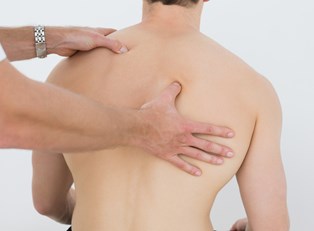Gynecomastia is a condition in which men or boys develop large breast tissue. It can affect one or both breasts and is usually caused by an imbalance in hormones. It often occurs when there is a decrease in testosterone when compared to the levels of estrogen in the body. Several factors can contribute to a hormone imbalance. The following information discusses the symptoms of gynecomastia and available treatment options.
Identifying Symptoms
Simply noticing an increase in the size of the breasts may be the first time a male realizes that something has changed. Instead of just getting bigger, the glands and tissues in the breast may become tender and swollen. Usually the condition is not painful. There may also be a slight discharge from the nipple. A discharge is not necessarily an indication of a more serious medical issue. The growth may be uneven and might occur just behind the nipple area. Besides an increase in size, the breast may feel rubbery when touched.
Seeing a Physician
Sometimes this condition goes away without any treatment. This is often the case when gynecomastia occurs in infants or younger boys. Since hormone levels in the body may fluctuate at different times in a man's life, seeing a doctor right away may not be necessary. Certain symptoms, however, require prompt medical attention. If you feel pain or notice a bloody discharge from either nipple, a doctor should be consulted. If there is a firm, hard lump in a localized area, this could possibly be breast cancer and it needs to be examined by a medical professional. Gynecomastia that worsens or doesn't go away on its own will require you to visit a physician.
Receiving Treatment
Treatment will first require the identification of the cause of the gynecomastia in the first place. There are several medications that can cause or contribute to this condition, and a physician will likely go over all of the medications you are currently taking. Medication used to treat prostate conditions and epilepsy can cause enlargement of breasts. Other medications that might trigger this condition include ulcer medications, certain cancer treatments, anti-anxiety drugs such as Valium, and even certain antibiotics. Stopping or substituting these medications may be necessary to treat the condition. Abuse of illegal drugs or alcohol can sometimes be a contributing factor in this condition as well.
Other treatment options sometimes include medications such as tamoxifen and raloxifene, which are drugs that are normally prescribed to treat breast cancer. If stopping certain medications or prescribing new ones doesn't remedy the condition, surgery may be used as an alternative. Liposuction can remove the fat in the breast but not the glands. A mastectomy would remove the entire breast and gland tissue.




